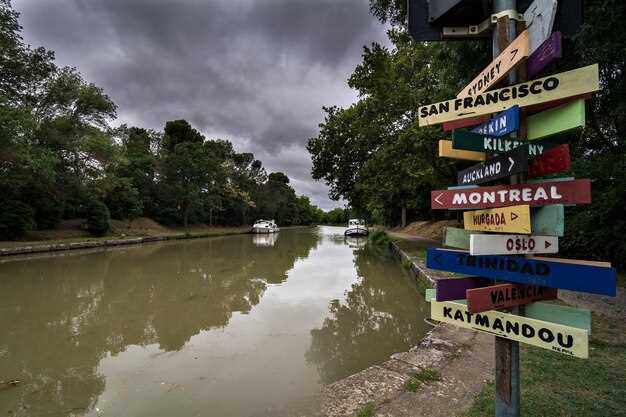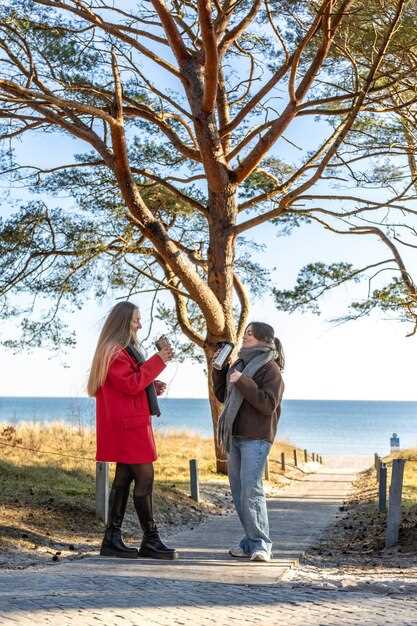Charleston is known for its historic charm, and this guide helps you curate a select, broad set of experiences for every weekend, with strolls that reveal different facets across the area. Each attraction offers a doorway into the city’s story, from age-old masonry to a leafy live oak forest that shades the sidewalks, so you can map your route in minutes and customize with confidence.
Begin with a waterfront stroll along the Battery, where rows of grand mansions frame the historic district and the atlantic breeze carries stories of forts, ships, and bird species like heron and pelican. Pause at an aantrekkingskracht marker to learn about the first seawall, then drift toward the Market for crafts and coastal bites.
For architecture lovers, the historical district unfolds a broad panorama of styles from colonial to Victorian. The guide highlights nationally recognized dining along the waterfront, from casual seafood shacks to luxury experiences–perfect for a weekend retreat that pairs history with luxe hospitality.
To round out your plan, explore every area of the peninsula: the Market’s crafts, a few plantations, and marshboardwalks where more bird species invite you to pause. The 22 Best Things to Do in Charleston, South Carolina – 2025 Guide keeps your route tight with practical tips, curated maps, and restaurant picks that pair coastal flavors with refined service.
Curated Charleston Experiences: Boone Hall Plantation and Surrounding Highlights

Start with a must-do walk along Boone Hall Plantation driveway, where the hall, towering loblolly pines, and blooming magnolia set a vivid mood for the day ahead.
- Boone Hall Plantation and Gardens: Stroll the oak-lined avenue, step into the hall, and wander the formal gardens to feel the layers of history. Hear african-american stories from guides, pick a bench with marsh views, and capture photos that merge heritage with Southern porch life.
- Fort Sumter National Monument and nearby forts: Catch a morning ferry from Charleston Harbor to Fort Sumter, then contrast the sea-washed ruins with Fort Moultrie on Sullivan’s Island. Plan a 3–4 hour window to tour the ramparts, watch the water, and note military innovations that shaped American coastlines.
- Marion Square, Broad galleries, and markets: Use Marion Square as a kickoff to a gallery crawl along Broad Street, then browse the Charleston City Market and nearby stalls for regional crafts, fresh greens, and handmade goods–an easy way to connect with local makers and growers.
- Restaurants, hotels, and a distillery stop: Pick a dinner spot in the French Quarter or near King Street, then tour a nearby distillery to see the craft behind Charleston spirits. Stay at hotels with rooftop lounges or brick-wurnished inns that put you within a short walk of harbor views and evening events.
- Golf and fishing around Charleston: Reserve a tee time at a public or resort course within a 20-minute drive, and book a half-day fishing charter for estuary flats or intracoastal marshes. Feeshours vary by season, so call ahead to align tides with your plan.
- African-american heritage and broader American history: Seek out walking tours and small museums that spotlight African-American labor, community life, and culture in the region, plus national history markers that contextualize Charleston within American narratives.
- Congaree National Park day trip: For a change of scenery, drive inland for a Cedar Creek boardwalk experience through towering trees, then return to the coast with a fresh perspective on river ecosystems and Southern forests.
- Galleries, markets, and Japanese influences: Browse contemporary art and traditional crafts at nearby galleries, and look for Japanese-influenced works or prints during seasonal shows to add a quiet, reflective counterpoint to the coastal pace.
Boone Hall Plantation: Hours, Tickets, and Seasonal Closures
Plan your Charleston itinerary by arriving in the morning to enjoy fresh air, calm gardens, and boardwalks along the marsh, where you will witness the property’s history come to life.
- Hours: Open daily 9:00 AM–5:00 PM. Last entry at 4:30 PM. Garden paths and outdoor areas stay accessible until closing; guided house tours run on the hour from 10:00 AM to 3:00 PM (subject to guide availability). Seasonal variations may apply, so verify the current schedule before you go.
- Tickets: General admission $22 for adults; seniors 65+ $20; youth 6–12 $12; under 5 free. Add-ons include a garden pass or a garden + house combo for about $28. Online purchases save time and often feature promotions and bundles; discounts for military and veterans may apply.
- Seasonal closures: Closed on Christmas Day and Thanksgiving Day. Winter maintenance can affect hours in January–February; always check the official Boone Hall calendar before visiting.
- Guided experiences: experienced guides, including alesha, a certified guide, tailor tours to your interests and share revolutionary-era history, African heritage stories, and connections to nearby sites like drayton.
- Site highlights: boardwalks along fresh marsh views, monuments and restored outbuildings, and rock-sturdy foundations that stand the test of time. The site established in 1681 offers a clear window into plantation life.
- Location and reach: Boone Hall sits about 12 miles from downtown Charleston, making it easy to combine with a city visit or other nearby plantations for a full day.
- Nearby options: a short drive to drayton and other historic sites; consider pairing with a fort-related excursion to enrich your historical understanding; visitors from states across the country frequently include Boone Hall in their itineraries.
- Promotions and activities: look for seasonal promotions and ticket bundles; on select weekends you may find events and small auctions or vendor markets that add value to your day. Ratings from travelers remain strong, and more guests share favorable results in reviews.
Avenue of the Oaks: Best Photo Spots, Timings, and Tips

Start at first light for three reasons: soft light filtering through the live oaks, cooler air, and thinner crowds along the lane. Along the Avenue of the Oaks, historic homes line the street, their porches and shutters creating natural frames. Water reflections from nearby marsh edges add depth to wide shots, and the environment feels welcoming for both casual visitors and touring photographers. Accessible viewpoints let you weave from the Market block to quiet side streets without missing the gift of morning light. Frame from 20 to 40 feet back to balance the canopy with house lines, and this light is made for expressive portraits.
Spot one sits at the northern end, where branches arch overhead to form a cathedral, offering a wide frame you can capture from about 20 to 40 feet. Spot two runs straight toward the Market district, with small shaded porches and old lamps creating strong leading lines you can shoot from curb level to include porch rooms and the row of trees. Spot three looks toward the marsh at the bend; as the canopy thins, water reflects the sky, so a 50 to 70 feet distance works well for a quiet, reflective shot.
Timings vary with season; golden hour windows are roughly 45–60 minutes after sunrise and 40–50 minutes before sunset. Every season brings different textures: spring moss glows with gentle light, summer offers richer greens, and winter mornings can deliver crisp, clear silhouettes. Open days are clearest early; weekdays tend to be quieter than weekends near the Market, making it easier to photograph without crowds. Next, consider exclusive, small-group touring options that register with certified guides who run programs that share facts about the oaks, their age, and how to compose shots for maximum impact.
Gear tips: a versatile 24–70 mm zoom covers spots one through three without changing lenses; bring a polarizer to tame glare on water and foliage, and shoot in RAW to preserve detail. Use the lowest ISO feasible, around 100–200, and bracket exposures to capture both sunlit leaves and shaded trunks. If you shoot handheld, keep the shutter around 1/125 to avoid motion blur; for misty mornings or dusk, drop to 1/60 or 1/80 and let the sky brighten gradually. In various light conditions, arrive with a plan for three targets–cathedral arch, porch-line leading shot, and marsh reflection–to maximize your session without backtracking along the same route.
Be mindful of the environment and residents: stay on public roadways, yield to pedestrians exiting homes, and avoid blocking driveways or private entrances. Nearby activity at the Market can add life to the frame, but keep a quiet stance so you don’t disrupt touring groups or golfers heading to the greens. Facts about the avenue show centuries-old trees supporting a rich habitat, so preserve the natural rooms of shade and air by avoiding crowding the canopy. If you want deeper context, register for a guided program that highlights three viewpoints and offers practical tips for lighting, composition, and timing to elevate every shot.
Historic Charleston Walk: A 2- to 3-hour Route Through the City
Start at Market Street near Meeting Street and walk clockwise along Broad toward the waterfront for a compact 2- to 3-hour Historic Charleston Walk that brings their stories to life.
Along East Bay Street, pause at Rainbow Row to admire the original Charleston single-house design, then drift toward the center of the peninsula where the palms shade brick sidewalks and several historic places await.
Turn toward the Battery and White Point Garden to savor atlantic winds and waters, and watch a small parade of sails against the harbor.
Visit the Old Slave Mart Museum on Chalmers Street to discuss slavery and its impact on city life, then cross to the Charleston Museum or Gibbes Museum for visual stories about local culture.
For a kid-friendly option, hop a horse-drawn carriage along King Street or Broad Street; the guide offers short shows and content tailored to kids, with an extra bite-sized historical highlight.
Since the route covers landmarks across Charleston County, pause at a public square to compare the original street grid with the current location and hear how communities preserved their cultural heritage.
jarryd, a local guide, notes you must pace yourself and savor every detail; finish with a waterfront coffee near the west end of the peninsula and reflect on the wildlife, maritime mood, and the story of a city that continues to grow, their resilience, and the cultural blend that defines Charleston.
Family Fun: Kid-friendly Activities at Boone Hall and Nearby
Plan a morning at Boone Hall with a garden stroll, a quick petting barn visit, and a hands‑on exhibit that tells the story of this estate across generations. Alesha, a guide with a passion for family education, leads a kid-friendly presentation about slavery era, the African heritage, and how the establishment grew, making history easy to grasp for curious youngsters.
Nearby, pair outdoor exploration with a splash of marine life: stroll the waterfront and then head to the South Carolina Aquarium for a stingrays encounter and a broad display of creatures that keeps little explorers engaged.
Afterward, head down to the harbor for a relaxed pier moment and a family-friendly harbor cruise option. Look for promotions at partnered venues, stop by the gift shop for curated keepsakes, and barge through local markets that offer retail finds and friendly vendor chats. Expect Mexican‑inspired bites and hong‑style snacks to recharge energy, giving you tasty breaks between exhibits and stories.
This plan keeps travel light and flexible, letting you weave education, culture, and play into a single family day across the Charleston area, with options that cater to active kids and curious adults alike.
| Activiteit | Locatie | Beste voor | Estimated Time | Price |
|---|---|---|---|---|
| Garden and farm walk | Boone Hall Plantation | All ages | 60–90 minutes | Admission + guided option |
| Stingrays touch pool | South Carolina Aquarium | All ages | 20–30 minutes | Included with admission |
| Pier and waterfront stroll | Local waterfront piers | All ages | 30–45 minutes | Free |
| Coastal cruises (family) | Charleston Harbor area | 5+ | 1–2 hours | Promotions available |
| Gift shop and curated keepsakes | Boone Hall gift shop | All ages | As you wish | Retail items |
Foodie Plan: Where to Eat Local Lowcountry Favorites After Your Visit
Pick a mid-range spot on King Street featuring Lowcountry favorites like shrimp and grits, she-crab soup, and house-made preserves. The menu highlights every plate with coastal flavors and a simple, straightforward vibe.
Drayton Street hosts several welcoming eateries where people find reliable standards and friendly service. Try a fried oyster basket with crisp hush puppies and pickled vegetables to taste the region. Choose a location with outdoor seating to enjoy people-watching as you wrap the meal.
Cooper-area options blend comfort and freshness. Order a shrimp po’ boy or a bowl of gumbo, paired with iced tea or a local ale. The staff usually explains where the seafood comes from, from fishery to plate.
Shop at nearby markets after your main meal to sample more foods, read the backstory on jars, and stock up on preserves to take home. This keeps your taste experience alive as you explore more signs of Lowcountry craft and location-based flavor.
Hatchery tours offer a behind-the-scenes look at oyster farming, followed by an attraction or market where you can sample raw or cooked options. These spots emphasize sustainable practices and support for small producers who feed America’s coast.
For a beach day extension, end with a sunset dinner at a resort or beach-side spot. Forts and historic sites along the waterfront add significance and a beautiful backdrop to your meal. For an upstate twist, try a pepper jelly glaze to greet the flavors with a qualifying kick.
Map your destinations and pick a mix of places that feel authentic, including a Drayton location for coffee and a cooper shop for handcrafted snacks. This trip-friendly plan reads as a culinary postcard for friends back home, with food that tells the story of America’s coast.

 22 Best Things to Do in Charleston, South Carolina – 2025 Guide">
22 Best Things to Do in Charleston, South Carolina – 2025 Guide">
